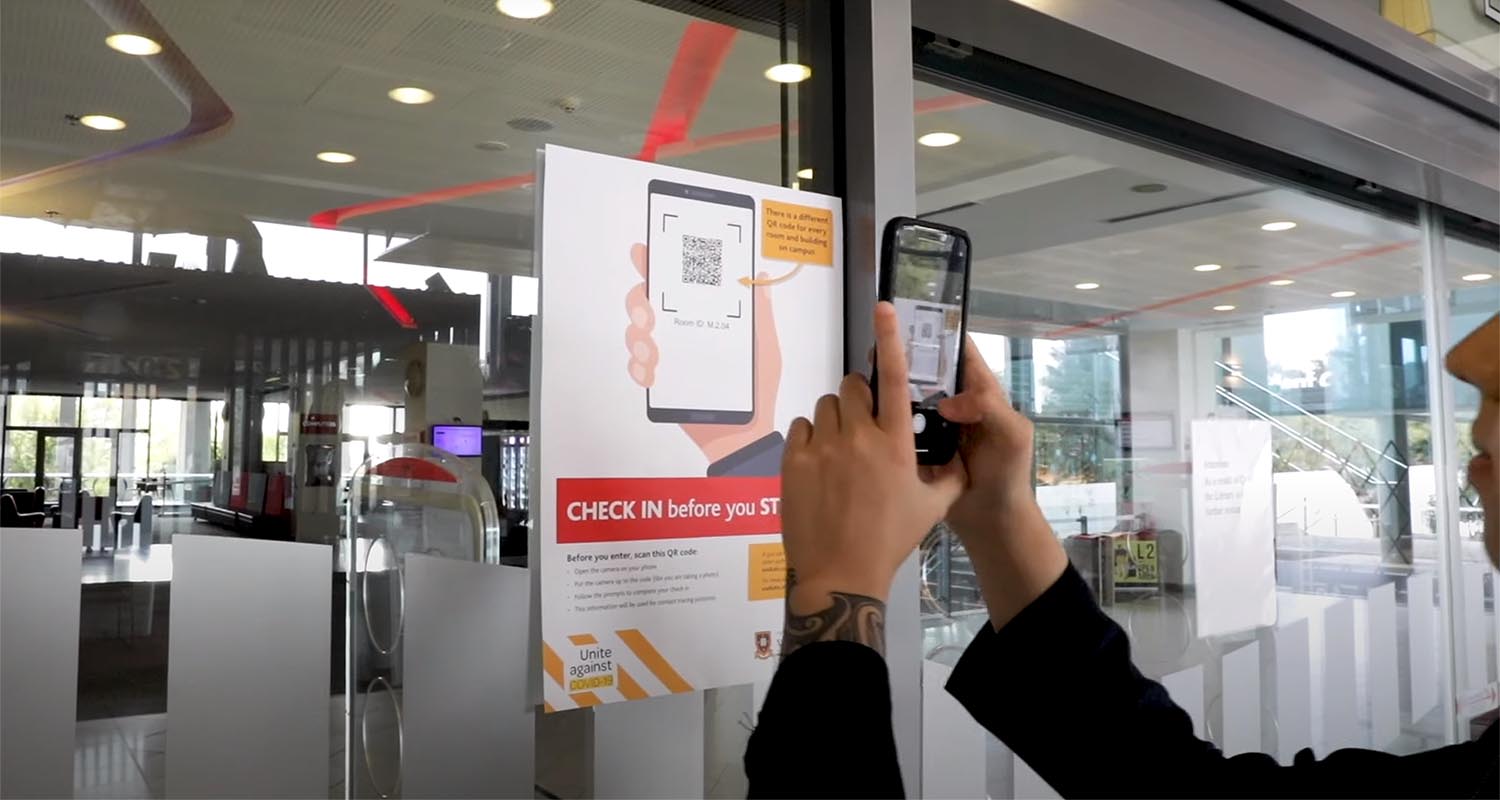Do you have a question? Want to learn more about our products and solutions, the latest career opportunities, or our events? We're here to help. Get in touch with us.

After hard, early lockdowns flattened New Zealand’s COVID-19 curve in the first half of 2020, universities across the country found themselves preparing to welcome back students. However, faced with strict contact tracing regulations, innovation was needed fast.
As the University of Waikato made plans for the safe and confident return of students and staff to its Hamilton and Tauranga campuses, contact tracing was a critical piece of the puzzle.
While the government's official NZ COVID Tracer app tracked people checking into one location, the Tertiary Education Commission (TEC) required that universities track students down to a specific building, floor, classroom, and even seat.
“Our campus is widely spread with 60 main buildings and over 5,000 separate spaces across multiple levels, including resident accommodation. It’s like a small suburb," says University of Waikato chief information officer (CIO), Eion Hall. "It’s not enough to just report who was on campus. We needed granular tracing of movements and close contacts.”
With the second trimester and the return of students to education fast approaching, David Gunn, associate director — programme and commercial at the university, began scoping potential solutions with his team
“From the start, we knew any system had to be simple so that people would use it consistently, and secure so students and staff knew their information was safe. We also didn’t want an app solution because the extra step of having to download it could have prevented some from using it.”
While other vendors proposed building a new app or heavily customising existing tools, Datacom came up with a surprisingly simple solution: Salesforce Service Cloud, a customer service and help desk platform using Salesforce's world-leading customer relationship management (CRM) technology.

Each location across the university’s campuses, as well as its secondary operating sites, was entered into the system and allocated a unique QR code. These were then printed on posters and banners and placed at all entry points. Students, staff, and visitors were able to simply scan the QR codes using their phones on the way into a building, floor, and/or room, and their activity and close contacts were recorded in the system.
The program, called ‘Check in before you step in’, was designed, built, tested, and deployed in four weeks.
Over 5,000 QR check-in points were placed at the entry and exit of each building, floor, classroom, and residential hall which provided a simple way for the 13,000-plus students and staff to log their movements. In venues like theatres or labs, students could also enter their seat number.
By capturing this data, the university could identify where people went and match that with other people who were in the same location and the same time — critical information for the Ministry of Health should it need to contact trace any potential cases.
Privacy and security were critical not just to ensure data protection, but also to ensure staff and students had confidence when using the program.